Approximately 96% of website visitors are not ready to make a purchase yet. However, they may be willing to provide useful marketing data in exchange for value. With proper nurturing, these leads can become customers one day too.
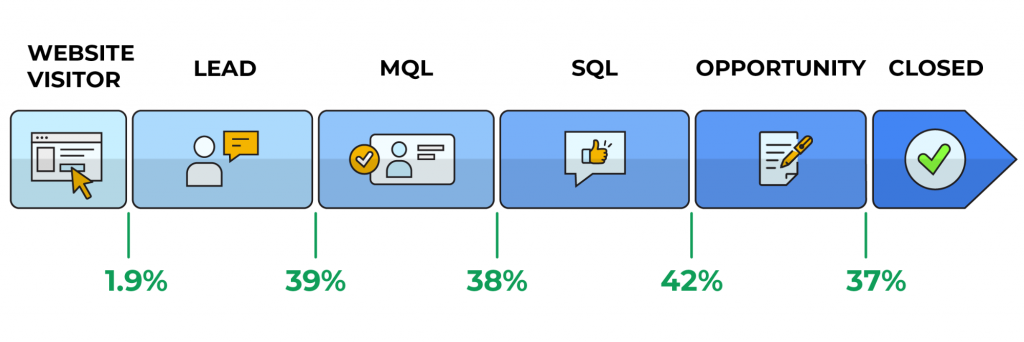
With that being said, your ability to make the most of your incoming traffic can substantially impact the quality of results generated from your marketing funnel.
To ensure that your funnel is consistently generating high-quality leads, you need to regularly optimize it, paying attention to trends and changes in consumers’ behavioral patterns.
This is where marketing funnel analysis comes in.
Marketing funnel analysis allows you to identify who your prospects are, where they’re coming from, things that can trigger their exit, and everything you can implement to help them progress to the next stage.
In this guide, we will dive deeper into the concept and review the top five marketing funnel analysis tools you can use.
What Is Marketing Funnel Analysis?
Marketing funnel analysis is the process of examining each stage of the user journey, from initial awareness to final conversion, to understand how potential customers move through the funnel and where they drop off.
The marketing funnel typically consists of stages like:
- Awareness: The top of the funnel where potential customers first become aware of your brand, product, or service.
- Interest: At this stage, prospects begin to show interest in your offerings. They engage with your content, explore your website, or follow your social media channels to learn more about what you offer.
- Consideration: Here, users are actively considering your product or service as a solution to their needs. They may compare your offering with competitors, seek reviews, or engage in deeper research.
- Intent: Prospects have a strong interest and are likely close to decision-making. They may add products to their cart, sign up for a free trial, or directly inquire about your services, indicating their intent to purchase.
- Conversion: The final stage of the funnel where the prospect takes the desired action, such as making a purchase, signing a contract, or completing a lead form.
In a comprehensive marketing funnel analysis, brands track key metrics at each stage, such as the number of leads generated, the conversion rates between stages, and the overall cost per acquisition.
Additionally, funnel analysis allows marketers to perform user segmentation based on behaviors or demographics, enabling a more personalized approach to nurturing leads.
Marketing Funnel Analysis: Why Does it Matter?
Marketing funnel analysis is essential for several key reasons:
- Optimizing Customer Acquisition: Funnel analysis helps identify which stages of the customer journey are most effective and where potential customers are dropping off. This allows for targeted improvements that enhance the overall conversion rate and reduce customer acquisition costs.
- Maximizing ROI: By understanding how leads progress through the funnel, companies can allocate resources more efficiently, focusing on the stages and channels that deliver the highest returns.
- Sustaining Growth and Competitiveness: For companies operating at scale, maintaining a competitive edge requires a deep understanding of the customer journey. Funnel analysis provides the necessary insights to continuously refine and improve marketing efforts, driving sustained growth and long-term success.
Top 5 Marketing Funnel Analysis Tools
This section will look at some of the best tools you can leverage to analyze and optimize your marketing funnels for best results.
1. HubSpot
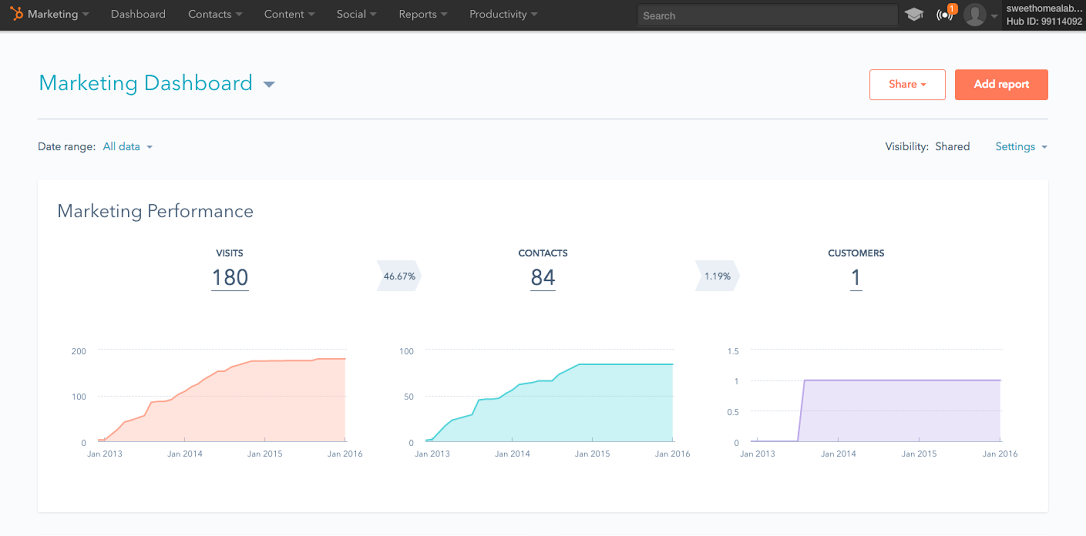
HubSpot is one of the best tools for marketing funnel analysis and optimization. It offers a comprehensive suite of features that provide deep insights into each stage of the funnel, allowing businesses to fine-tune their strategies and maximize ROI.
Key features for funnel analysis and optimization:
- Contact Management and Segmentation: HubSpot's detailed contact management and segmentation helps marketers categorize leads based on behavior, engagement, and lifecycle stage. This user segmentation is critical for understanding how different groups move through the funnel and for delivering personalized experiences that increase conversions.
- Marketing Automation: HubSpot’s automation tools help nurture leads through the funnel with precision. Automated workflows can be set up to trigger emails, follow-ups, or content offers based on a user actions. This helps in keeping prospects engaged and moving them closer to conversion.
- A/B Testing and Optimization: HubSpot’s A/B testing features enable marketers to experiment with different versions of emails, landing pages, and CTAs to determine what works best at each stage of the funnel.
2. Improvado
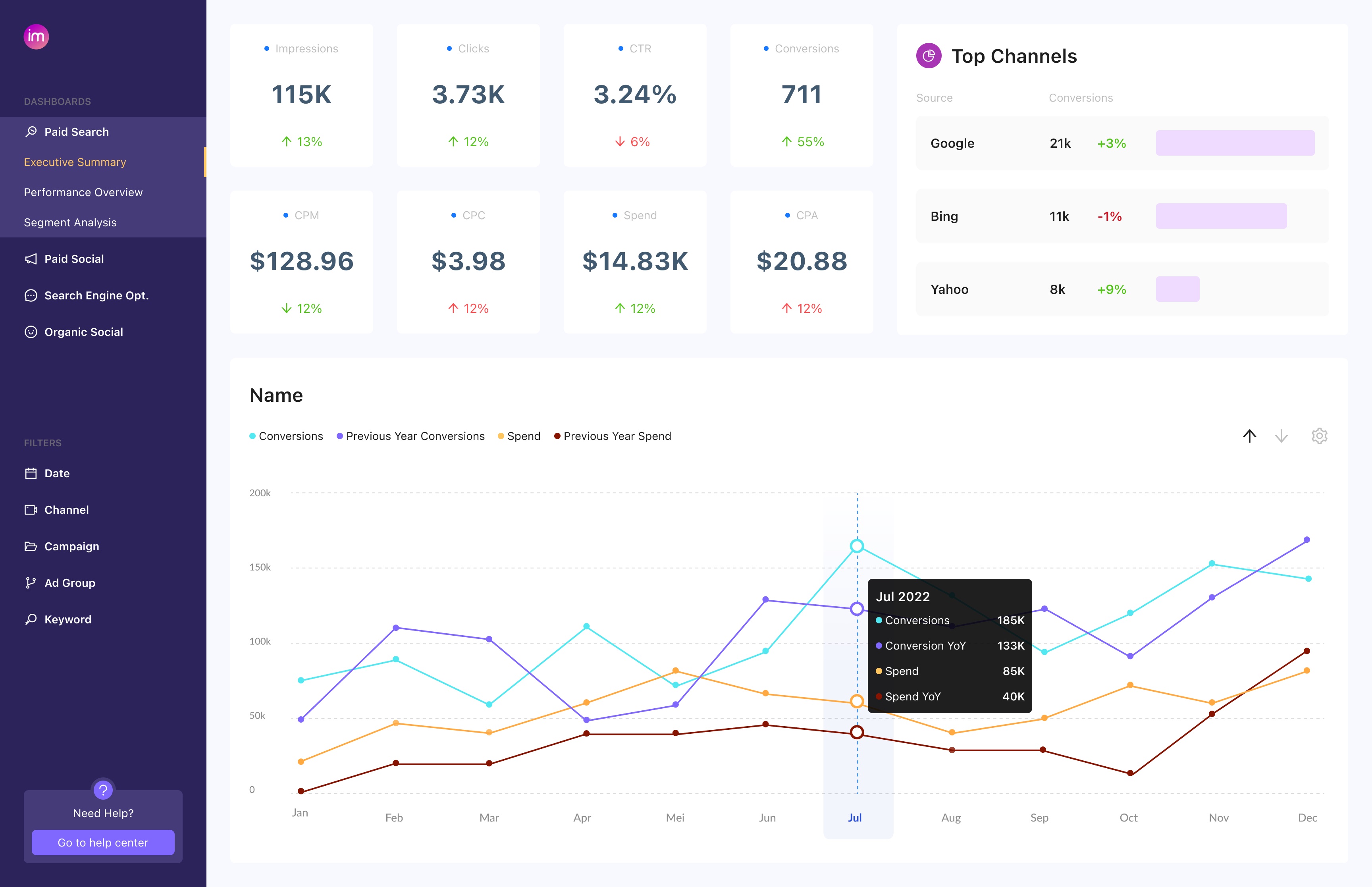
Improvado is a marketing analytics platform that plays a crucial role in marketing funnel analysis and optimization, especially for enterprise-grade companies.
By centralizing and harmonizing data from multiple sources, Improvado provides a unified view of the entire marketing funnel, allowing businesses to analyze performance across all channels and touchpoints.
Key features for funnel analysis and optimization:
- Data Integration and Centralization: Improvado integrates with over 500 marketing, sales, and analytics platforms, bringing all your data into a single, unified dataset. This centralized approach eliminates data silos and provides a comprehensive view of how prospects move through different stages across various channels. With all data in one place, marketers can easily identify trends, spot friction points, and make data-driven decisions.
- Cross-Channel Performance Insights: Improvado provides detailed insights into how different marketing channels are performing within the funnel. By analyzing cross-channel data, marketers can identify the most effective touchpoints for driving leads and conversions, as well as uncover opportunities to improve underperforming areas. This holistic view is essential for optimizing the entire marketing ecosystem.
- AI-Driven Insights and Automation: Improvado AI Agent is a search-based analytics tool that helps marketers gain near-real-time funnel reports and insights into marketing performance. The AI-driven insights ensure that marketing efforts are always data-backed, helping to refine tactics and improve conversion rates throughout the funnel.
- Marketing Data Governance: Improvado offers a robust solution for campaign, brand, and data compliance, providing insights for ongoing ROAS optimization. The platform monitors all aspects of complex campaigns and issues alerts for any anomalies, problems, or changes in metrics.
3. Google Analytics
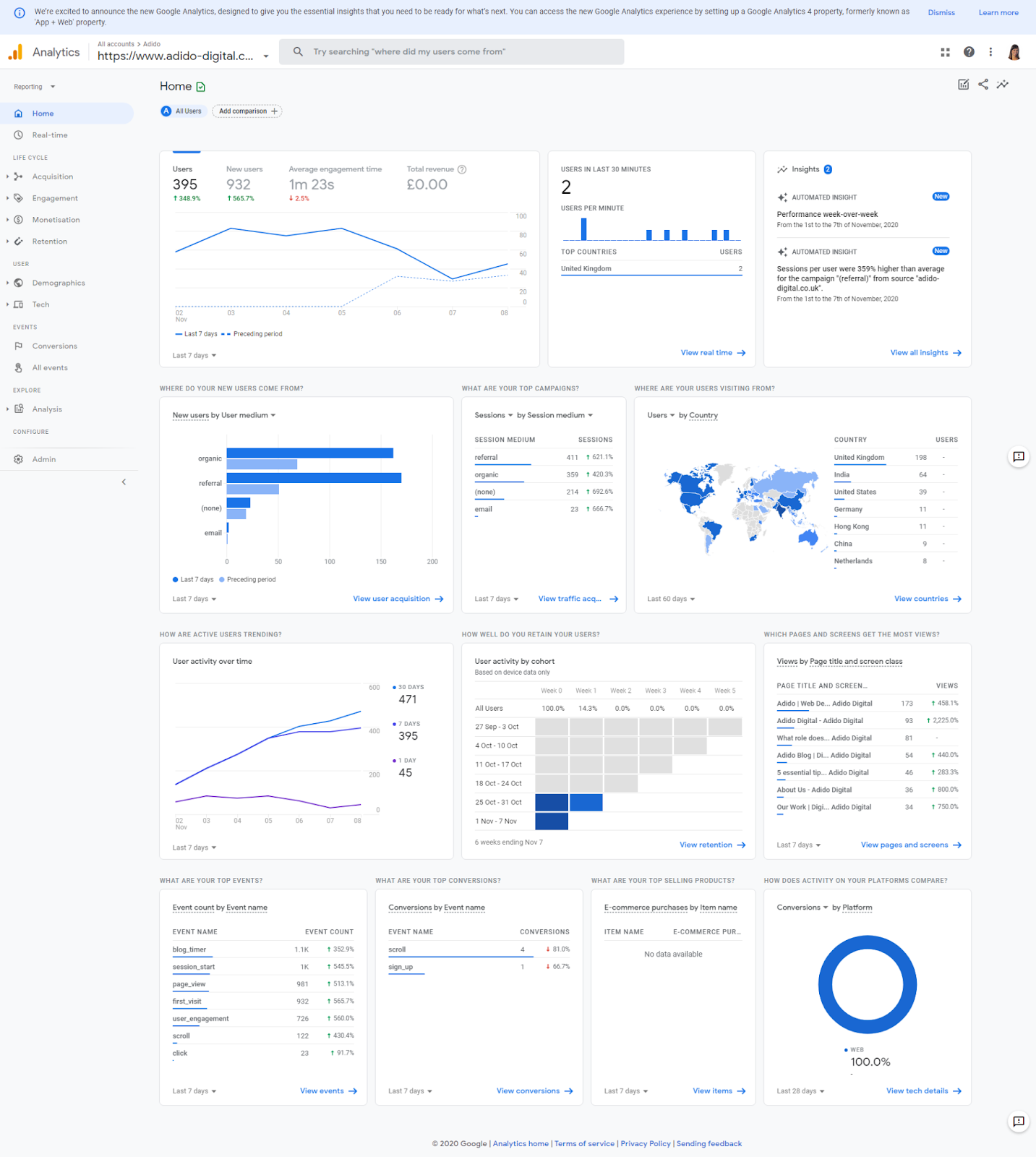
Google Analytics is a powerful tool for marketing funnel analysis and optimization, offering deep insights into how users interact with your website and digital campaigns.
Key features for funnel analysis and optimization:
- Web analytics: Google Analytics allows you to map out the entire user journey, tracking how visitors move through your website from the first interaction to the point of conversion. By understanding user paths, marketers can identify which stages of the funnel are performing well and where users are dropping off, enabling targeted improvements.
- Goal and Funnel Visualization: Google Analytics lets marketers set up specific goals such as sign-ups, checkout, downloads, and other custom events and visualize the steps users take to reach these goals. This provides a clear view of how many users complete each stage of the funnel and highlights any bottlenecks or areas of friction that may be hindering conversions.
- E-commerce Tracking: For businesses with an online store, Google Analytics offers enhanced e-commerce tracking, providing detailed insights into product performance, shopping behavior, and transaction data. This feature allows marketers to optimize the e-commerce funnel by identifying top-performing products, understanding cart abandonment rates, and improving checkout processes.
- Segmentation and Audience Insights: Google Analytics offers advanced segmentation capabilities, allowing marketers to break down data by various dimensions, such as demographics, geography, behavior, and traffic source. This segmentation helps in understanding how different audience segments move through the funnel and enables more personalized marketing strategies to improve conversion rates.
4. Mixpanel
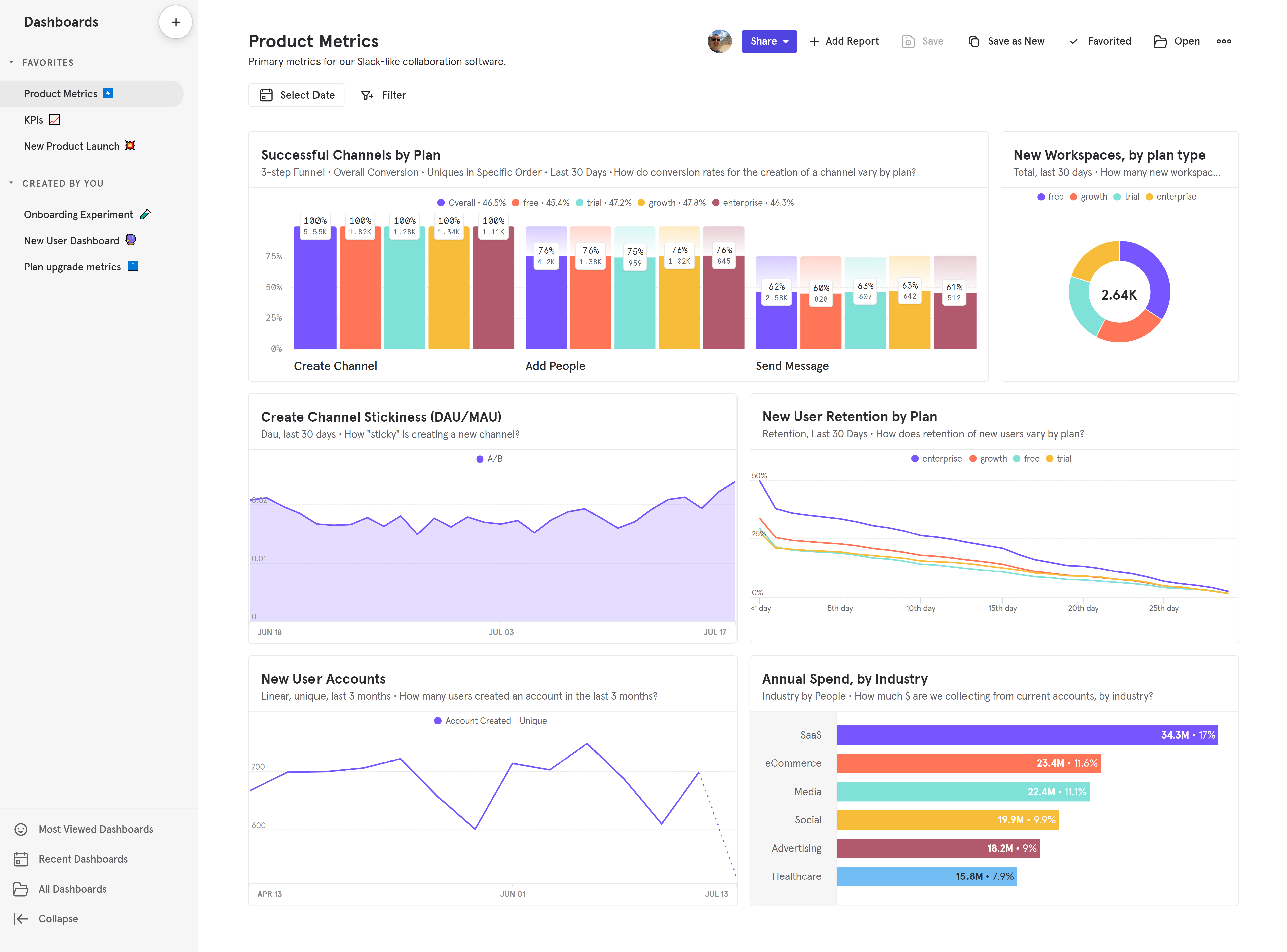
Mixpanel is a comprehensive analytics platform designed for in-depth user behavior analysis, making it an excellent tool for marketing funnel analysis and optimization.
It provides real-time insights into how users interact with your product or service, enabling marketers to understand and optimize every stage of the funnel, from user acquisition to retention.
Key features for funnel analysis and optimization:
- Event-Based Tracking: Mixpanel allows brands to monitor specific user actions within a website or app, such as clicks, form submissions, and purchases. This granular level of detail helps in building a comprehensive understanding of user behavior at each stage of the funnel, identifying which actions increase conversions and where users may be experiencing friction.
- Funnel Reports: Mixpanel’s Funnel Reports provide a clear visualization of how users move through each stage of the funnel. Marketers can track the conversion rates between stages, identify where users drop off, and test different scenarios to see how changes impact the funnel.
- Retention Analysis: Mixpanel also helps brands understand and improve user retention. Retention reports show how often users return after their first visit or purchase and what actions contribute to long-term engagement. This insight is crucial for optimizing the bottom of the funnel and ensuring that users remain engaged with your product over time.
5. Amplitude
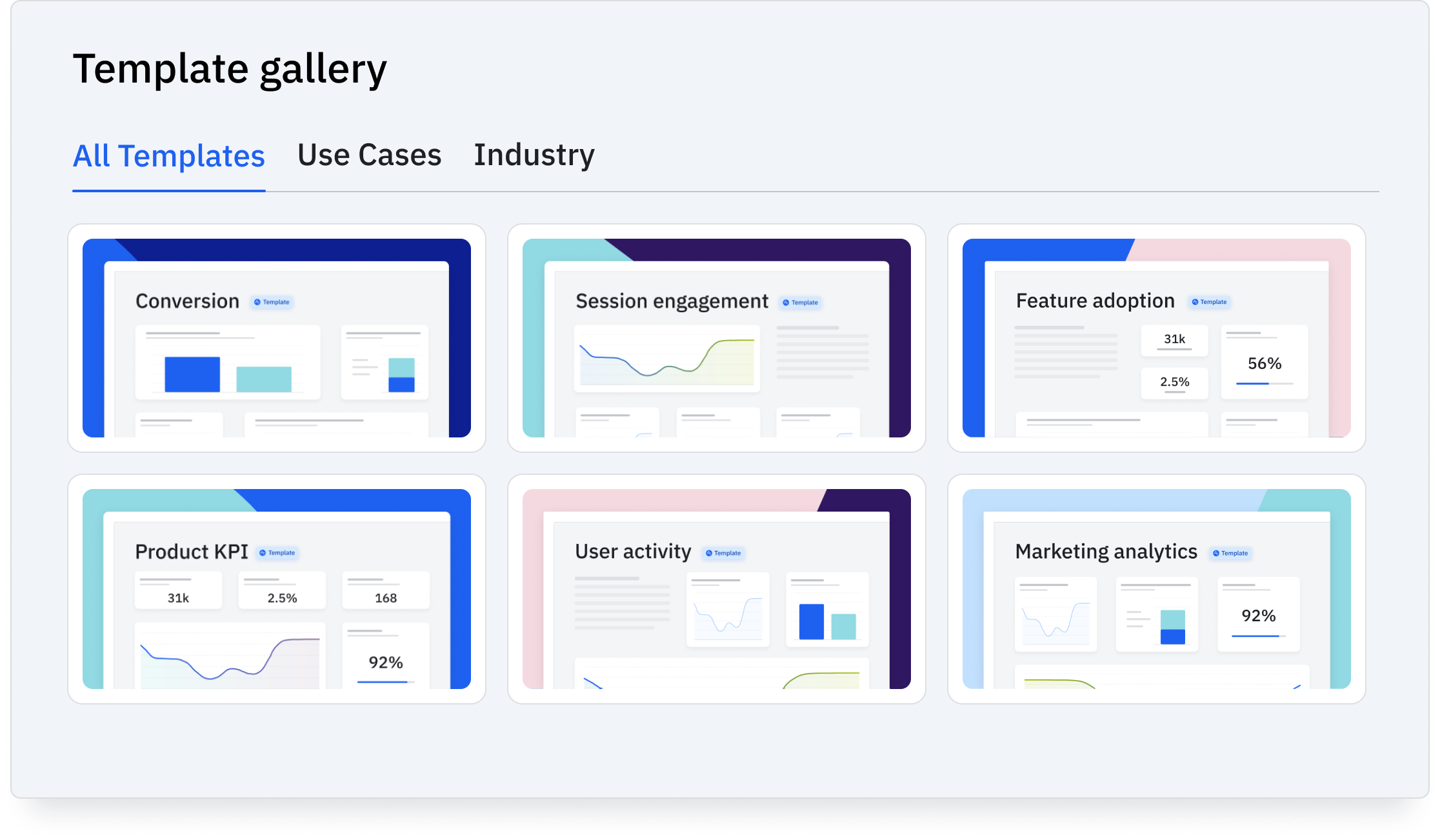
Amplitude is a leading product analytics platform that empowers marketers and product teams to gain deep insights into user behavior.
It provides comprehensive data on how users interact with a product, helping teams understand the entire customer journey and optimize each stage of the funnel to drive conversions and retention.
Key features for funnel analysis and optimization:
- Pathfinder Analysis: Pathfinder is a powerful tool for visualizing all possible paths users take within your product. By understanding the different user journeys, marketers can identify the most common paths to conversion as well as alternative routes that may indicate user confusion or inefficiency.
- Retention and Growth Analytics: Amplitude provides robust tools for analyzing user retention and long-term growth. Retention analysis helps marketers understand which factors contribute to ongoing user engagement. This focus on retention is essential for optimizing the entire customer lifecycle.
- Funnel Analysis Reports: Amplitude Funnel Reports offer clear visualizations of user flow through different stages of the marketing funnel. Marketers can easily see where users drop off and identify stages with the highest friction. This enables the quick identification of problem areas, allowing for targeted interventions that improve conversion rates and streamline the user journey.
The Ultimate Marketing Stack for Your Business
The strategic objective of marketing funnel analysis is to reduce cost per lead and improve your funnel’s MQL-to-SQL conversion rate.
That said, one of the smartest ways of achieving this is to identify the channels that generate high-quality traffic and simply focus on those. However, with more touchpoints involved in consumers’ conversion journey, channels, geographic regions, and other variables, tracing events back to the right channels has become more challenging.
Marketing teams must equip themselves with a full set of tools to track, source, analyze, optimize, and implement marketing strategies. Choosing the right software and setting it up is an essential part of running successful marketing campaigns.
.png)




.png)
